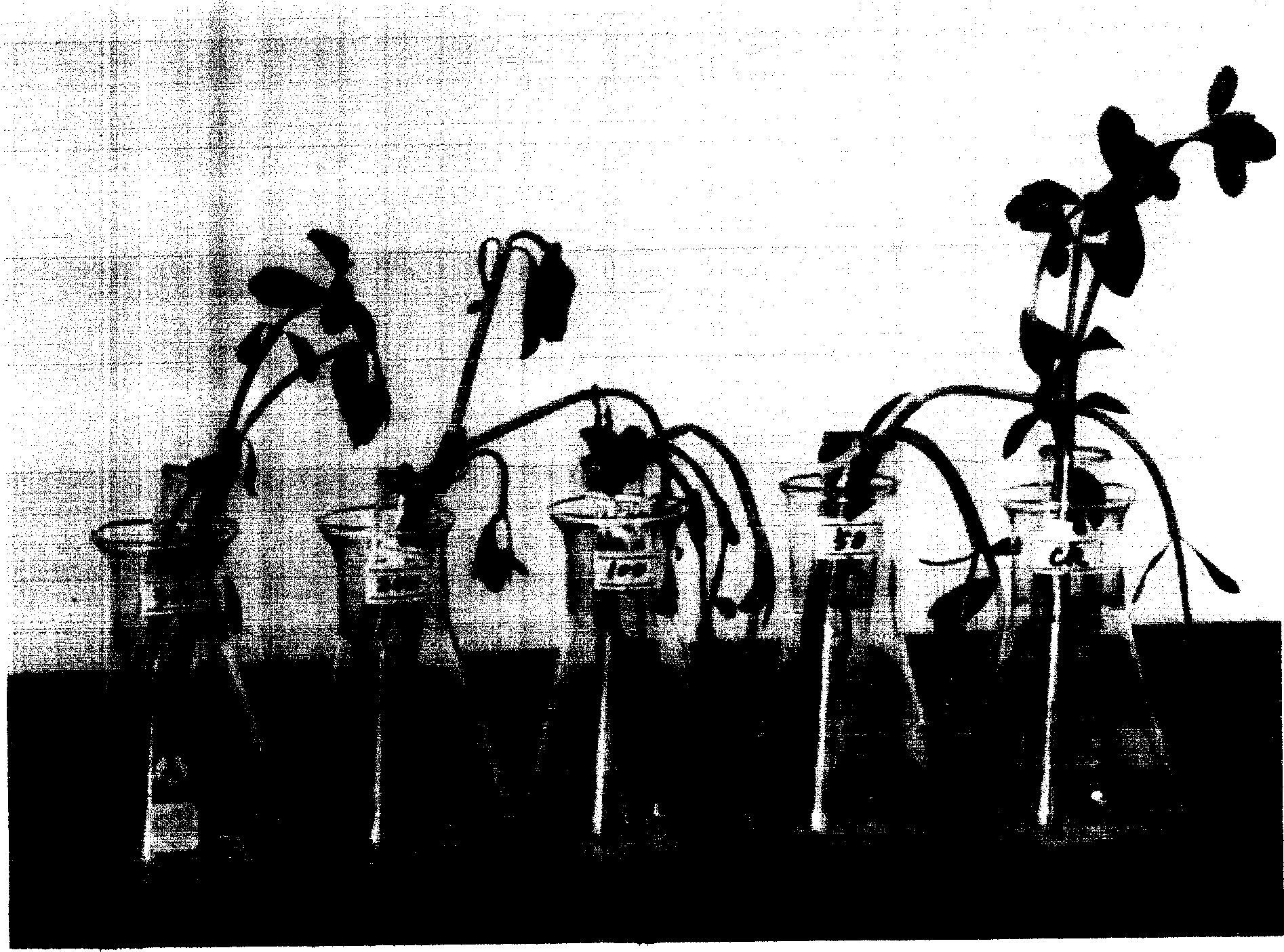Use of 2- acetyl-3,4-di hydroxy-5- methoxyphenyl-acetic acid in suppressing growth of hollow grass
A technology of Echinochloa chinensis and methoxyphenyl, applied in the fields of application, plant growth regulator, chemicals for biological control, etc.
- Summary
- Abstract
- Description
- Claims
- Application Information
AI Technical Summary
Problems solved by technology
Method used
Image
Examples
Embodiment 1
[0008] Example 1 The pathogenic effect of toxins on the leaves of A. chinensis
[0009] Take the second and third pairs of leaves from the bottom to the bottom of A. japonicus with uniform growth and health, wash them gently with running water, wash them with distilled water for 3 times, dry them with filter paper, cut them into small pieces of 0.5cm×0.5cm with a blade, and cut them into 0.5cm×0.5cm pieces, respectively Immerse in test tubes containing 2 mL of toxin solutions with concentrations of 100, 50, 30, 20, 10, 5, 3 and 1 μg / mL, gently immerse the leaves in the toxin solution with a glass rod, and use distilled water as a control. Treat 3 repetitions. Put the test tube into a light incubator at 25°C, observe the results once every 24 hours, and record the leaf block lesions.
[0010] Results: The toxin has a significant pathogenic effect on the leaves of A. japonicus. Treatment with 5 μg / mL toxin solution for 24 hours can cause water-soaked brown spots on the leaves o...
Embodiment 2
[0013] Example 2 The wilting effect of the toxin on the plants of A. chinensis
[0014] Dig out the Alpinia phylloxera plant that has just rooted in the field, wash the root soil with running water, put it into the leafy vegetable hydroponic solution for 3-4 days, and then wash it with distilled water 3 times, dry the water with filter paper, and transfer it to a container containing 10mL In centrifuge tubes with concentrations of 300, 200, 100 and 50 μg / mL toxin solutions, 3 strains per tube. Distilled water was used as the control, and each treatment was repeated twice. Stand under natural light at room temperature, observe the results once every 24 hours, and record the wilting and root lesions of the plants.
[0015] Results: The toxin had a strong wilting effect on the plants of A. chinensis, and the treatment of 50 μg / mL for 24 hours could cause the plants to show wilting symptoms, and at the same time, the roots and the toxin solution turned brown ( figure 1 ).
PUM
 Login to View More
Login to View More Abstract
Description
Claims
Application Information
 Login to View More
Login to View More - R&D
- Intellectual Property
- Life Sciences
- Materials
- Tech Scout
- Unparalleled Data Quality
- Higher Quality Content
- 60% Fewer Hallucinations
Browse by: Latest US Patents, China's latest patents, Technical Efficacy Thesaurus, Application Domain, Technology Topic, Popular Technical Reports.
© 2025 PatSnap. All rights reserved.Legal|Privacy policy|Modern Slavery Act Transparency Statement|Sitemap|About US| Contact US: help@patsnap.com

